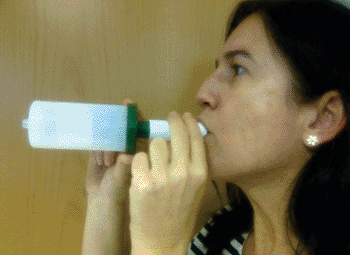Exhaled Breath Compounds Identify Early Lung Cancer
By LabMedica International staff writers
Posted on 10 Feb 2014
The diagnosis of lung cancer can involve a number of tests, but specific compounds in exhaled breath have been discovered that may be used to diagnose the disease in its early stages.Posted on 10 Feb 2014
Of all cancers, lung cancer is the biggest killer in both men and women it causes more deaths than colon, breast and prostate cancer combined according to the American Lung Association (Chicago, IL, USA).

Image: A “biosignature” of compounds in a breath test may reveal lung cancer (Photo courtesy of Elhuyar Fundazioa).
Scientists at the University of Louisville (KY, USA) used a silicone microprocessor and mass spectrometer to test exhaled breath of patients with suspected lung cancer for specific volatile organic compounds (VOCs) known as carbonyls. These included aldehydes and ketones, organic compounds with carbon double-bonded to oxygen, which are at very low concentrations and produced by the human body.
The team developed the silicone microprocessor, which was coated with an amino-oxy compound that binds to carbonyl compounds found in exhaled breath. Measuring the levels of carbonyls in exhaled breath has provided the investigators with a way to accurately identify early lung cancer. After removing malignant nodules in certain patients, the team found that these elevated carbonyl concentrations returned to normal. The scientists made the discovery when they were examining patients with "suspicious" lung lesions.
Michael Bousamra, MD, an associate professor at the University of Louisville, said when discussing the potential for use of this technique as a standard test. “Instead of sending patients for invasive biopsy procedures when a suspicious lung mass is identified, our study suggests that exhaled breath could identify which patients may be directed for an immediate intraoperative biopsy and resection. The novelty of this approach includes the simplicity of sample collection and ease for the patients.”
Professor Bousamra added, “Although the data are preliminary, we found that patients with an elevation of three or four cancer-specific carbonyl compounds was predictive of lung cancer in 95% of patients with a pulmonary nodule or mass. Conversely, the absence of elevated VOC levels was predictive of a benign mass in 80% of patients.” The study was presented at the 50th Annual Meeting of the Society of Thoracic Surgeons, held January 25–29, 2014, in Orlando (FL, USA).
Related Links:
American Lung Association
University of Louisville













